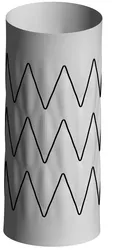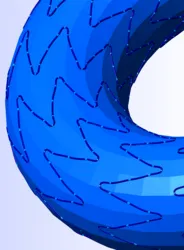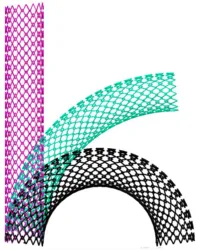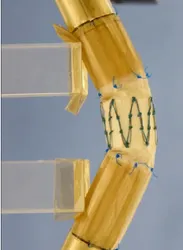Biomedical: Modeling of Stents and Stent Grafts for Endovascular Repair
Alexander Popp
Arterial stent placement has become a very important and successful intervention in vascular surgery. One of the most common scenarios includes so-called self-expandable stent grafts composed of a special fabric graft and a metal stent mesh. Stent grafts are used in endovascular aortic repair (EVAR) to support weak localized bulges (aneurysms) in an artery being at risk of rupture, most commonly for abdominal aortic aneurysms (AAA). Over the last decade, an enormous thrust of research regarding the computational analysis of biomedical engineering problems in general, and regarding vascular mechanics and AAA in particular has taken place. While significant progress has been made, the computational analysis of AAA stent grafts using finite element methods (FEM) is still not predictive enough to give specific advice to vascular surgeons on how to optimally place the device during EVAR. Possible risks, which are stillfar from being fully understood, include a movement of stents away from the desired location (migration), leaking of blood around stent grafts (endoleakage) and damage of the arterial wall caused by the stent itself.
The main objective of this project is the development, implementation and validation of new innovative FEM simulation tools for AAA stent grafts based on a bottom-up modeling approach. All relevant micro-geometrical and mechanical features of thecomplex stent graft designs will be included into the new models, thus allowing for a significantly increased accuracy of stent expansion and placement simulations. At the same time, the computational efficiency of existing approaches will be preserved or even improved by using cutting-edge beam finite element formulations based on the Kirchhoff theory of thin rods as well as novel algorithms for contact interaction. The long-term vision is to include the developed bottom-up stent graft models into a comprehensive simulation tool chain for the entire EVAR process and therefore to provide vascular surgeons with unprecedented predictive capabilities regarding the patient-specific optimal choice of a stent graft design and positioning in order to safeguard against the typical stenting risks mentioned above.




Collaborators
Oshima Lab @ Institute of Industrial Science, The University of Tokyo
Department of Vascular Surgery, The University of Tokyo Hospital
Biomechanics Lab, Shibaura Institute of Tehnology

